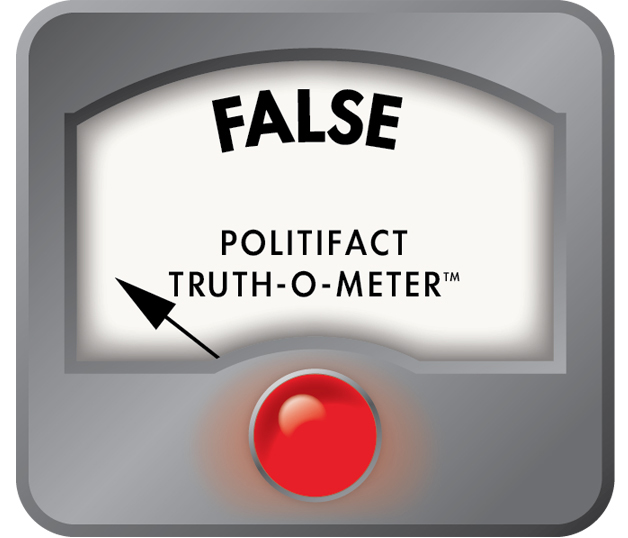Get PolitiFact in your inbox.
Donald Trump wrong again that recent tax bill is biggest ever
President Donald Trump repeated in his State of the Union address one of his most frequent talking points — and one that has been repeatedly debunked.
"We enacted the biggest tax cuts and reforms in American history," Trump said in his address.
Measuring the size of the tax cut is a straightforward task. And as we noted the last time we fact-checked a similar claim, the tax bill passed last December doesn’t stack up as the largest cut ever.
On the eve of its passage, the Joint Committee on Taxation — Congress’s nonpartisan arbiter of tax analysis — said the tax bill would cost about $1.5 trillion over 10 years, or about $150 billion a year.
How does that compare historically?
The Treasury Department has published a list of the biggest tax bills between 1940 and 2012, measured not only by contemporary dollars but also by inflation-adjusted dollars and as a percentage of gross domestic product (a measure of the size of the overall economy).
Depending on what projection of the current bill you use and what yardstick you measure it by, several bills since 1980 were larger. Here’s the list by inflation-adjusted dollars:
Tax bill
Inflation-adjusted dollars (per year)
American Taxpayer Relief Act of 2012 (enacted in 2013)
$321 billion
Tax Relief, Unemployment Insurance Reauthorization, and Job Creation Act of 2010
$210 billion
Economic Recovery Tax Act of 1981
$208 billion
Tax Cuts and Jobs Act of 2017
$150 billion
By this measurement, the recent tax bill ranks as the fourth-biggest since 1940.
The Trump-signed legislation falls lower on the list when the cuts are ordered from highest to lowest as a percentage of GDP:
Tax bill
Percentage of GDP
Economic Recovery Tax Act of 1981
2.89 percent
Revenue Act of 1945
2.67 percent
Revenue Act of 1948
1.87 percent
American Taxpayer Relief Act of 2012 (enacted in 2013)
1.78 percent
Revenue Act of 1964
1.6 percent
Tax Relief, Unemployment Insurance Reauthorization, and Job Creation Act of 2010
1.31 percent
Tax Cuts and Jobs Act of 2017
0.9 percent
By this measurement, the recent tax bill ranked seventh.
The Committee for a Responsible Federal Budget has noted that an even earlier tax cut from 1921, not included in the Treasury Department analysis, accounted for 1.1 percent of GDP.
The group added in a blog post that "if President Trump wanted to pass a tax cut that exceeds the record 2.9 percent of the economy in 1981, it would cost roughly $6.8 trillion over ten years."
Our ruling
Trump said, "we enacted the biggest tax cuts and reforms in American history."
In inflation-adjusted dollars, the recent tax bill is the fourth-largest since 1940. And as a percentage of GDP, it ranks seventh.
We rate the statement False.
Our Sources
Donald Trump, State of the Union address, Jan. 30, 2018
U.S. Treasury Department, "Revenue Effects of Major Tax Bills, Updated Tables for All 2012 Bills," February 2013
Committee for a Responsible Federal Budget, "Is President Trump's Tax Cut the Largest in History Yet?" Oct. 25, 2017
Federal Reserve Bank of St. Louis, annual GDP, accessed Oct. 26, 2017
Browse the Truth-O-Meter
More by Louis Jacobson
Donald Trump wrong again that recent tax bill is biggest ever
Support independent fact-checking.
Become a member!
In a world of wild talk and fake news, help us stand up for the facts.






 PolitiFact Rating:
PolitiFact Rating: 

































